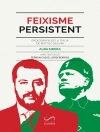This book provides the first substantial treatment of the maritime foreign and security policies of the European Union. Its findings add to the literature by a comparative, theoretically informed analysis of EU maritime foreign and security policies across five cases: the EU’s Maritime Security Strategy and action plan; the EU’s two naval missions, Atalanta and Sophia; EU Arctic policies, and; EU policies towards the Maritime Labour Convention. Focusing on the aims, actors and mechanisms of integration in these cases, the book speaks to the three main debates in the literature on EU foreign policy, including whether it has a particular normative dimension that makes it different from foreign policy as it is conventionally understood; the extent to which policy-making in the domain has developed beyond intergovernmental cooperation and, interlinked; how EU foreign and security policy integration and its characteristics can be explained. In doing this, the book also addresses a fourthcontemporary scholarly debate linked to if and how the EU is affected by crisis. By focusing on maritime security policies the book also adds to the international relations literature more broadly.
This book is an invaluable resource for scholars, students and practitioners interested in EU foreign and security policy, European and global maritime security issues, EU integration, EU crisis and international relations.
Marianne Riddervold is an Associate Professor at Inland Norway University of applied sciences, a Senior fellow at UC Berkeley Institute of European Studies and a Guest Researcher at ARENA – Centre for European Studies at the University of Oslo.
Innehållsförteckning
Chapter 1: Introduction: A Maritime Foreign and Security Power in the Making?.-Chapter 2: EU Maritime Foreign Policies Between Norms and Economic Interests: Piracy and Maritime Labour Standards.- Chapter 3: The EU`s Naval Mission Sophia: A Humanitarian Operation to Help Refugees in Distress at Sea?.- Chapter 4: A Maritime Global Commons Power in the Making? On the Characteristics of EU policies Towards the High Seas: The Arctic and the Maritime Security Strategy.- Chapter 5: An Actor With Agency: The Influence of the Commission on EU Maritime Foreign and Security Policies.-Chapter 6: Beyond the Pillar Divide: The Administrative Functioning of EU Maritime Foreign and Security Policy.- Chapter 7: EU Maritime Foreign and Security Integration – Explaining the EU Maritime Security Strategy.-Chapter 8: Driven by Geopolitical Events? The Impact of the Ukraine Crisis on EU Maritime Foreign and Security Policies.- Chapter 9: Expertise and Circumvention: How the Commission Influences the EU`s Maritime Foreign and Security Policies.- Chapter 10: Why Not Fight Piracy Through NATO? Explaining the EU’s First Naval Mission – EU NAVFOR Atalanta.- Chapter 11: EU Maritime Foreign and Security Policies: Aims, Actors and Mechanisms of Integration.
Om författaren
Marianne Riddervold is an Associate Professor at Inland Norway University of Applied Sciences, a Senior Fellow at UC Berkeley Institute of European Studies, California, USA, and a Guest Researcher at ARENA – Centre for European Studies at the University of Oslo, Norway.












